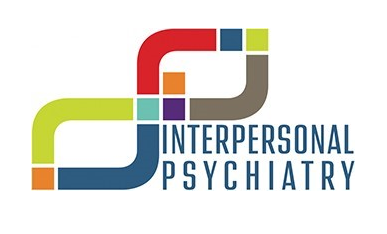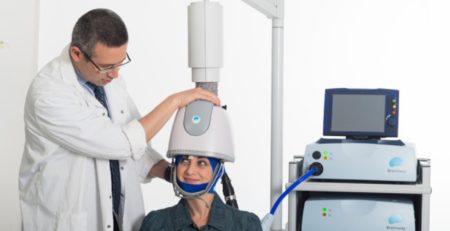Understanding Personality Disorders: What You Need to Know
Personality disorders are often misunderstood and stigmatized. Many people have heard the term but are unsure of what it means. This lack of understanding can be detrimental to those struggling with a personality disorder, making them feel isolated and alone. In this blog post, we will explore the world of personality disorders, what they are, and how they impact individuals. By the end of this article, you will better understand what personality disorders are and how they can affect a person’s life.
There are ten different types of personality disorders, each with unique symptoms and characteristics. These include borderline personality disorder, narcissistic personality disorder, paranoid personality disorder, and antisocial personality disorder. Some common causes of personality disorders are believed to be influenced by genetic and environmental factors, such as childhood trauma, abuse, and neglect.
Personality disorders affect an individual’s ability to function in various settings, including social, occupational, and personal interactions. For instance, individuals with borderline personality disorder often experience intense and unstable emotions, impulsive behaviors, and difficulty maintaining relationships. On the other hand, individuals with narcissistic personality disorder may exhibit grandiosity, a lack of empathy, and an excessive need for admiration.
It is important to note that just because someone exhibits certain behaviors does not necessarily mean they have a personality disorder. A mental health professional typically makes a diagnosis after a thorough evaluation, which may involve a physical exam and psychological tests. Treatment for personality disorders often includes psychotherapy, medication, and support groups.
It is crucial to understand that personality disorders are not a choice, nor can they be cured overnight. Individuals who struggle with personality disorders often face societal stigmatization and judgment, making it difficult to seek help. Families, friends, and healthcare professionals must provide support and empathy while fostering a non-judgmental environment.
What Causes Personality Disorders?
Personality disorders are complex and often misunderstood mental health conditions that can cause significant distress to those who struggle with them. While the exact cause of personality disorders is not fully known, many experts believe that a combination of genetic, environmental, and social factors can contribute to their development. For example, traumatic experiences, such as abuse or neglect during childhood, can increase the risk of developing a personality disorder later in life. Additionally, some research suggests that certain personality traits, such as impulsivity and emotional instability, may also play a role in developing these conditions. Understanding the underlying factors contributing to personality disorder development is crucial for developing effective treatment strategies and supporting those affected.
Personality disorders feature an array of factors in their development. One of the most noticeable causes is childhood trauma, such as sexual, emotional, physical, or verbal abuse from friends, parents, peers, or teachers. Unhealthy experiences during crucial developmental stages create stark challenges when enduring their effects into adulthood.
Recent genetics studies also aim to highlight their contributions to the development of personality disorders. Thus far, researchers point towards a specific combination of genetic and environmental influences compelling such calamities. Nonetheless, how one interprets experiences functions as vital regarding potential mental medical diagnoses.
How Are Personality Disorders Treated?
Have you been wondering how Personality Disorders are treated? Millions of people worldwide have Personality Disorders, and seeing effective treatments for these situations can be a significant breakthrough. To understand the different methods of treating this disorder, examining what defines them is essential. Specifically, personality disharmonies involve difficulties regulating emotions, another way of saying individuals haven’t learned successful coping strategies or tactics in dealing with difficult emotions. Therefore, any effective treatment plan will include teaching appropriate coping strategies.
Cognitive Behavioral Therapy (CBT) offers goals that foster insight and well-orchestrated relationships as effective medications for both depression and bipolar disorder relief will help individuals living with Personality disorders manage their emotions by denoting certain behaviors and teaching other healthier ones. Individual and Group Counseling aims to approach a person’s life independently or collaboratively depending on circumstances in understanding core issues involved amidst feeling overwhelmed yet enabled to unearth joys buried under emotional disputes.
Treatment options are available if you’ve been diagnosed with a personality disorder. Every disorder type is handled differently, but speaking to an Interpersonal Psychiatry therapist is a great way to get started. This lets patients learn more about their condition and feel comfortable expressing what’s happening inside their heads.
But there aren’t any FDA-approved drugs to treat personality disorders. Doctors may prescribe anti-anxiety, antidepressant, antipsychotic or mood-stabilizing medication to help manage specific symptoms.

Personality Disorders
Antisocial: Individuals with an antisocial personality disorder often have difficulty understanding certain social conventions, such as compassion and pity. They may act recklessly or carelessly, putting themselves or others at risk, without much regard for the consequences. When confronted about their actions, they may lack any meaningful sense of regret or remorse– showing guilt does not come naturally. The effects can be devastating to both themselves and the people around them.
Narcissistic: People with narcissistic personality disorders think highly of themselves, believing they are superior to others. This makes them appear selfish and inconsiderate, as they focus almost solely on fulfilling their needs over anyone else’s. They do not typically put other people’s interests first when it comes to decisions, disregarding the feelings of those around them. This can be frustrating for those dealing with someone who has a narcissistic disorder because they are often viewed as arrogant, manipulative, and uncaring.
Avoidant: Avoidant individuals are highly concerned about interactions with others, often going to incredible lengths to protect themselves. This can manifest in fear of forming relationships, engaging in social activities and keepsakes, or even unnecessary worrying. Moreover, any criticism towards them is met with intense sensitivity– fears of being ridiculed also weigh heavily on their minds.
Obsessive-Compulsive: Since people with Obsessive-Compulsive Disorder (OCD) strive for perfection, they can create an unattainable bar for themselves. This behavior typically depends on a singular course of action for undertaking tasks, regardless of their time and effectiveness. In OCD, it’s almost as if feeling the need to fulfilled self-imposed standards overpowers other thoughts and responses. Therefore, being rigidly structured is created without fail and followed without question to ensure expectations are met through one specific modality.
Borderline: Those with borderline personality disorder can seem to teeter on a cliff’s edge of instability, overwhelmed by intense feelings of loneliness, profound self-harm thoughts, and often unexpectedly chaotic emotions. Getting a Borderline Personality Disorder( BPD) diagnosis used to correct severe behavior or treatment-related issues isn’t uncommon, as only one aspect. Often, people see High levels of comorbidity with; binge eating, severe anxiety, and depression. An amalgamation that has difficulty recording from entirely different subsets can be incredibly hard to diagnose and differentiate between at times.
Paranoid: Sometimes, the dangers lurking in an otherwise harmless everyday situation are far more apparent to those caught up in the grip of paranoia. Those with paranoid personality disorder perceive threats from even innocuous events happening around them, thus making them constantly uneasy. As many as two to four percent of individuals have this type of disorder, with their concerns drastically affecting how they interact with the world. The everyday activities that make life feel safe and calm are experienced in a different light by these people, who can’t help but treat every event or reaction skeptically. It’s no wonder that something like jostling in a queue can become alarming for them instead of just a minor inconvenience for everyone else.
Dependent: Dependent individuals struggle with even the most straightforward decisions. Their self-esteem may be fragile, leading them to look up to others for guidance and help as though others are inherently more competent than them. This belief of a lack of competency stops dependent individuals from seizing opportunities and feeling wanting relative to other people’s perceived capabilities. This often extends unintegrated recognition that another can do what they feel they cannot. Consequently, dependent attitudes lead to low self-confidence and hesitation when making decisions independently.
Schizoid: For many individuals, participating in most activities is an incredibly challenging endeavor, often offering very few moments of joy. Consequently, such individuals find themselves preferring to spend considerable amounts of time enjoying solitude. Being by themselves is often necessary for them to feel comfort and peace within their mind. While social gatherings can provide stimulating entertainment, these people ultimately find more satisfaction from their own company than anything else. Hence, opting for solitary living becomes their preferred option if given a choice.
Histrionic: Histrionic individuals are among those most affected by the need for attention. Their far-reaching pursuits are all grounded in a deep craving to be at the center of attention; many will go to any length and take conspicuous risks they may not usually take if it promises to promote the desired exposure. Consequently, rash, impulsive decisions can result as they rush all too often onto curiosity’s tenuous thread; convinced need surpasses wisdom. Generally speaking, such behavior could land them in predicaments or as desperate acts of extravagance, as though boasting a flurry of the display behind each quelled bout of restlessness.
Schizotypal: Individuals diagnosed as having schizotypal personality disorder often have difficulty managing their distress while in social settings and interactions. This is noticeable to observers, who can detect awkward movements or behaviors showcased by the affected individuals. Furthermore, people may perceive them as uncomfortable when engaging in group activities or in heavily populated public areas. Other signs of this disorder include illogical thinking and speaking patterns that stick out from those demonstrating healthy individuality, leading the individual to shuffle their thoughts anxiously instead of speaking confidently like their peers. Despite the lack of underlying emotions radiating from afflicted parties, occasional bursts of enthusiasm or leaps of reasoning occur – coming out of nowhere unbeknownst to most people around them.
- Personality disorders are mental disorders that affect a person’s thoughts, emotions, and behaviors.
- Various factors, including genetic predisposition, early childhood experiences, and trauma, can cause personality disorders.
- Personality disorders are classified into three major categories: Cluster A, Cluster B, and Cluster C.
- Cluster A personality disorders include paranoid personality disorder, schizoid personality disorder, and schizotypal personality disorder.
- Cluster B personality disorders include antisocial personality disorder, borderline personality disorder, histrionic personality disorder, and narcissistic personality disorder.
- Cluster C personality disorders include avoidant personality disorder, dependent personality disorder, and obsessive-compulsive personality disorder.
- Personality disorders can cause various problems in a person’s life, including problems in relationships, problems at work or school, and social isolation.
- Early diagnosis and treatment of personality disorders is essential to prevent further problems from developing.
- A variety of treatment options are available for people with personality disorders, including medication, therapy, and self-help groups.
- It is important to seek help if you think you or someone you know may have a personality disorder.












